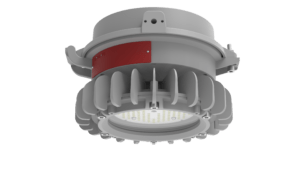Welcome to the Intrinsically Safe Store, your one-stop-shop for all things related to safety in hazardous environments. We are dedicated to providing you with the most accurate and up-to-date information on safety equipment. In this article, we will delve into the world of intrinsically safe and explosion-proof devices, comparing their energy efficiency. We invite you to visit our website to explore our wide range of products and services.
Understanding Intrinsically Safe and Explosion-Proof Devices
Before we dive into the comparison, it’s crucial to understand what IS and explosion-proof devices are. Designers create intrinsically safe devices to limit the available energy, both electrical and thermal, for ignition. These devices prevent explosions in hazardous areas by ensuring that the system always maintains an energy level below the ignition point of the environment.

On the other hand, explosion-proof devices are designed to contain any explosion originating within its housing and prevent sparks from within its housing from igniting vapors, gases, dust, or fibers in the air surrounding it.
Energy Efficiency of Intrinsically Safe Devices
IS devices are generally more energy efficient than their explosion-proof counterparts. The design of these devices specifically allows them to operate with low current and voltage, thereby reducing the amount of energy they consume. For example, people use intrinsically safe barriers to limit the amount of energy that can enter a hazardous area. These barriers operate at a low power level, which makes them highly energy efficient.
Energy Efficiency of Explosion-Proof Devices
Explosion-proof devices, while robust and reliable, are not typically designed with energy efficiency as a primary consideration. Their main function is to contain and isolate any potential ignition sources. This often requires robust and energy-intensive components, which can lead to higher energy consumption.
Case Study: Intrinsically Safe vs. Explosion-Proof Lighting
We can see a practical example of the energy efficiency difference between intrinsically safe and explosion-proof devices in lighting solutions for hazardous areas. IS LED lights, for example, consume significantly less energy than traditional explosion-proof lights. They also have a longer lifespan, reducing the need for frequent replacements and further contributing to energy and cost savings.
Choosing Between Intrinsically Safe and Explosion-Proof Devices
While energy efficiency is an important consideration, it should not be the sole factor in choosing between intrinsically safe and explosion-proof devices. The choice should be based on a comprehensive risk assessment of the specific hazardous area, considering factors such as the type of hazard, the likelihood of an explosive atmosphere, and the operational requirements of the device.

In conclusion, while IS devices are generally more energy efficient than explosion-proof devices, the choice between the two should be based on a comprehensive risk assessment. Both types of devices have their place in ensuring safety in hazardous areas. For more information on intrinsically safe and explosion-proof devices, or to explore our range of products, we invite you to visit the Intrinsically Safe Store. If you have any questions or need further assistance, please do not hesitate to contact us.


























